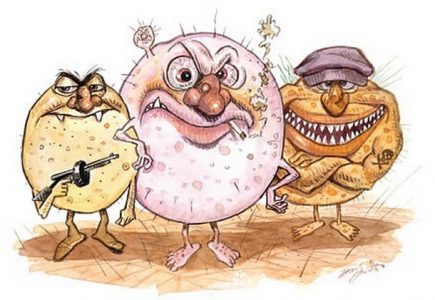 Introduction
Introduction
Nosocomial infections are those acquired during hospitalisation. An estimated 2-3% of children admitted to hospitals acquire a nosocomial infection; rates are much higher in intensive care units.
Hospital infections are more frequent and generally more severe in newborn infants than in older children or adults. The peculiar characteristics of this period of life allow for greater susceptibility to infections. Other factors responsible for infections being more severe in these patients is the increased survival of premature newborn infants, following prolonged neonatal ICU stay, use of invasive procedures and of wide spectrum antibiotics.
Neonatal Hospital infection in addition to being the cause of a significant number of perinatal, neonatal and postnatal deaths is also associated with increased healthcare costs.
Classification
Neonatal infections are divided into early onset(less than 3 to 7 days of life), and late onset(greater than 3 to 7 days of life).
Early onset – originated from the mother
Late onset – acquired after birth and thus not originated from the mother
The main pathway for acquiring microorganisms that can because infections are airborne transmission
Direct contact – direct physical transmission from an infected person to a host by hands or secretions
Indirect contact – physical transmission from inanimate objects such as transducer, thermometer, stethoscope, catheter and water
Common conveyors – contaminated fluids, IV solutions, milk etc.
Vectors – flies and cockroaches
The exposure to these sources will contribute to the establishing of an endogenous flora of the newborn, the bacterial colonization of the skin, the mucosa and the gastrointestinal and respiratory tract that in turn are the source of microorganisms that cause infection.
Etiology
The micro organism that cause hospital infections include bacterial, fungi and virus
Examples
- Staphylococcus aures(common infection causing wound infection)
- Staphylococcus epidermis
- Enterococcus
- Escherichia coli
- Klebsiela species(commonest pathogen involved in hospital acquired infections)
- Pseudomonas aeruginosa
- Serratia marcescens
- Enterobacter
- Candida
- Rota virus
Mode of transmission of some nosocomial infections
| Mode of transmission | Nosocomial infection | Infections reservoir | Source of infection |
| Air | Measles, pulmonary tuberculosis | Infected individuals | Air borne particles |
| Direct contact | Staphylococcal neonatal infection | Colonized/infected individuals | Hands containing secretions from infected individuals |
| Indirect contacts | Respiratory syncytial virus, antibiotic resistant bacteria | Infected individuals Colonized/infected individuals |
Hands and fomites |
| Droplets | Whooping cough, invasive meningococcal disease, group A streptococcal infection | Colonized/infected individuals | Large respiratory droplets |
| Endogenous | UTI – Escherichia coli | Periurethral skin and mucous membrane | Urinary catheter |
| Common sources | Post transfusion infections with HIV,HBV,HCV,CMV | Infected individuals | Contaminated IV fluids, donor’s contaminated blood products |
| Vectors | Salmonellosis Enteric infections |
Infected/colonized individuals Infected individuals or infectious material |
Flies, ants |
Prevention and control of Nosocomial infection
- Observe recommendations for standard precautions with all patient contact
- Observe recommendation for transmission – based precautions as indicated
- Gowns
- Gloves
- Masks
- Isolations
- Use of nursery design and engineering
- Appropriate nurse to patient ratio
- Avoidance of overcrowding
- Maintain hand washing practices
- Readily accessible sinks, antiseptic solutions and soaps
- Alcohol based antiseptic solution at each patient bedside
- Minimize risk of contamination of central venous catheters
- Maximal sterile barrier precaution during central venous catheter
- Sterile precaution of all fluids to be administered via a central venous catheter
- Minimal central venous catheter days
- Provide meticulous skin care
- Encourage early and appropriate advancement of central feeding
- Perform continuous monitoring in NICU
Homoeopathic management
Eucalyptus globulus
It is a powerful antiseptic and destructive to low forms of life, a stimulating expectorant and an efficient diaphoretic. A remedy with marked effects on catarrhal processes, malaria and intestinal disturbances.Influenza.
Echinacea
Acute autoinfection. Symptoms of blood poisoning, septic conditions generally. Cerebro-spinal meningitis, puerperal infections.Malarial fever.
Pyrogenium
Pyrogen is a the great remedy for septic states, with intense restlessness. Hectic, typhoid, typhus, ptomaine poisoning, diphtheria, dissecting wounds, sewer gas poisoning, chronic malaria, after-effects of miscarriage, all these conditions at times may present symptoms calling for this unique medicine. All discharges are horribly offensive.
Rhus toxicodendron
Post-operative complications.Septic conditions.Cellulitis and infections, carbuncles in early stages. Septicaemia. Typhoid. Skin is red, swollen and itching intensely.
Ferrum phosphoricum
Early stages of febrile conditions. Prostration marked. Susceptibility to chest troubles.Bronchitis of young children.In acute exacerbation of tuberculosis, a fine palliative of wonderful power. The remedy for first stage of all febrile disturbances and inflammations before exudation sets in.
Acknowledgement
I acknowledge the able guidance of Dr JYOSHNA SHIVAPRASAD BHMS, MD(HOM), PROFESSOR, GUIDE AND HOD, DEPT. OF PAEDIATRICS, Father Muller Homoeopathic Medical College & Hospital, Mangalore.
Bibliography
- IAP Textbook Of Pediatrics
- Nelson Textbook of Pediatrics
- Neonatal nosocomial infections – Mussi-Pinhata MM et alii published in Jornal de Pediatria – Vol. 77, Supl.1, 2001
- Boericke W. Homoeopathic Materia Medica and Repertory. New Delhi; B.Jain Publishers (P) Ltd.





